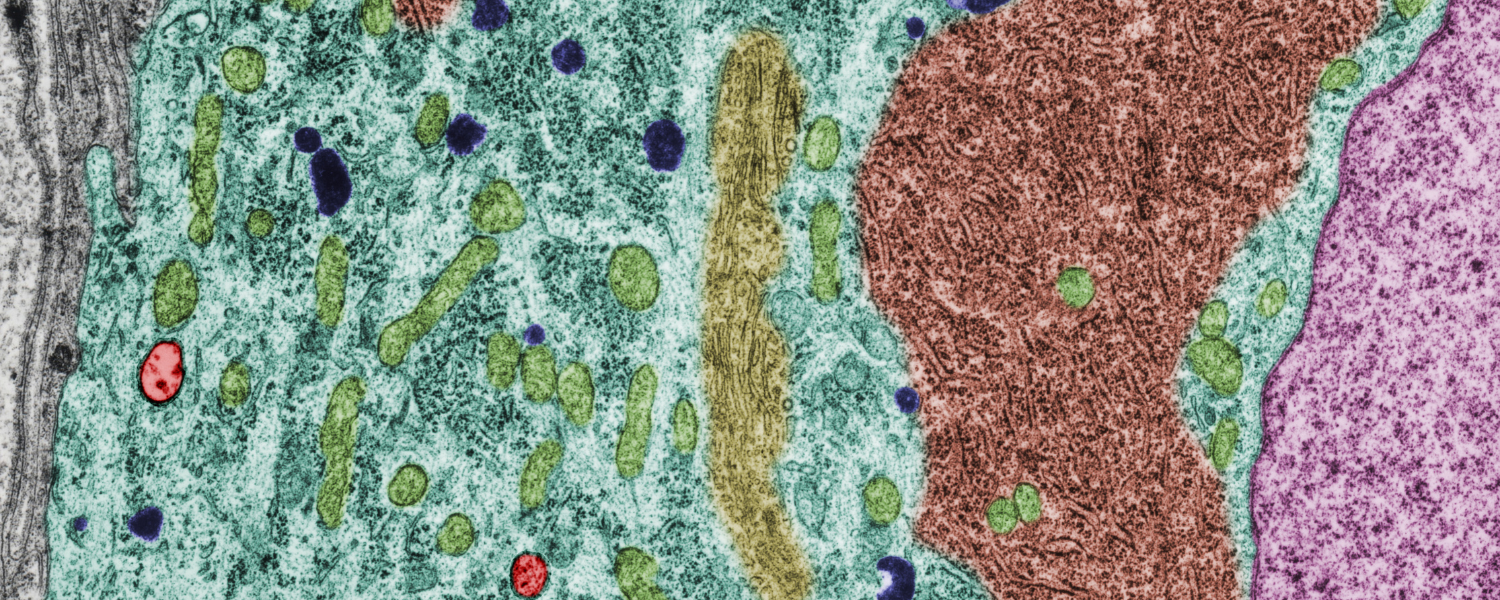Explainer: What is the endolysosomal pathway?
April 30, 2025

Our cells create a lot of waste and, just like us, they need a way to get rid of it.
That’s the job of the endolysosomal pathway. Much like a recycling center, the endolysosomal pathway is responsible for cleaning up and recycling different types of materials within the cell. It comprises a system of organelles — tiny cellular versions of organs — that play key roles in cell survival by maintaining cells’ internal environments. Because it plays such an important role, problems with the endolysosomal pathway can contribute to disease.
Here’s how the process works:
Identifying trash: First, the cell identifies cellular “junk.” These materials can include material taken in from its external environment, such as fats and proteins, or material from its internal environment like damaged organelles.1
Sorting center: Once identified, the “junk” goes into sorting hubs where specialized organelles sift through and decide what is waste and what can be recycled.2
Breakdown preparation: Next, the sorted “junk” is taken to preparation areas, where the cell gets ready to break down the waste materials. Enzymes — proteins that speed up chemical reactions — help cells break the material down.2
Recycle and dispose: Once the material is broken down, the waste is expelled from the cell and the useful nutrients are sent to different organelles within the cell to be reused, keeping things running smoothly.2
How is the endolysosomal pathway involved in disease?
Disruptions to the endolysosomal pathway can contribute to neurodegenerative diseases like Parkinson’s and Alzheimer’s.
Parkinson’s disease: When the endolysosomal pathway breaks down, it allows “junk”, such as misfolded proteins called alpha-synuclein, to accumulate within cells. Evidence suggests these toxic proteins disrupt normal neuronal function and lead to cell death, which in turn may contribute to the onset of Parkinson’s disease.3
Alzheimer’s disease: In Alzheimer’s disease, problems with the endolysosomal pathway’s ability to move materials can derail sorting and delivery patterns. This can lead to accumulation of harmful substances that damage neurons involved in memory and cognition.4
By better understanding the role of the endolysosomal pathway in health and disease, scientists are exploring ways to develop treatments that fix errors and restore function. Targeting this pathway holds immense promise for developing new ways to treat Parkinson’s and other neurodegenerative disorders.
Art Credit: Jose Luis Calvo
Sources
1 Cooper GA. The Cell: A Molecular Approach. Sunderland (MA); 2000. Lysosomes.
2 Repnik U, Cesen MH, Turk B. The Endolysosomal System in Cell Death and Survival. Cold Spring Harb Perspect Biol. 2013; 5(1):a008755.
3 Smith JK, Mellick GD, Sykes AM. The role of the endolysosomal pathway in α-synuclein pathogenesis in Parkinson’s disease. Front Cell Neurosci. 2023. 16:1081426.
4 Van Acker ZP, Bretou M, Annaert W. Endo-lysosomal dysregulations and late-onset Alzheimer’s disease: impact of genetic risk factors. Mol Neurodegener. 2019. 14(1):20.
